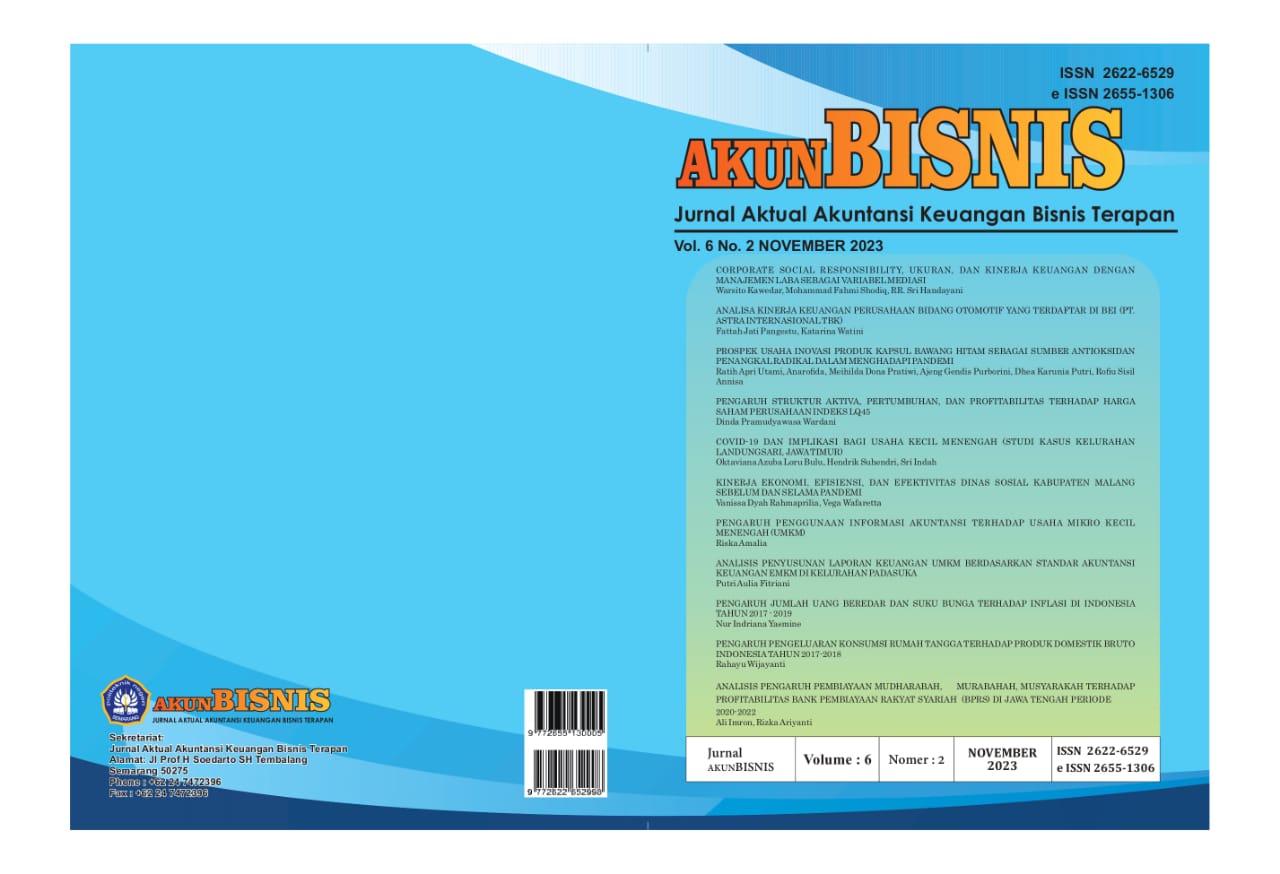ANALISIS PENYUSUNAN LAPORAN KEUANGAN UMKM BERDASARKAN STANDAR AKUNTANSI KEUANGAN EMKM DI KELURAHAN PADASUKA
Keywords:
SAK EMKM, Financial Reports, UMKMAbstract
The Financial Accounting Standards for Micro, Small and Medium Entities (SAK-EMKM) are accounting standards prepared to meet the reporting needs of micro, small and medium entities. This research was conducted to produce a simple financial report format based on SAK EMKM for UMKM and to find out what factors are the obstacles that UMKM have not implemented SAK EMKM. The object of this research is UMKM around the Padasuka village. This study uses a descriptive approach and data collection techniques used are interviews and literature study. From the results of the research conducted, it can be concluded that the financial statements of UMKM in Padasuka Village are still not able to apply SAK EMKM because the financial records are only simple records of cash expenditures and receipts. While the factors that become obstacles so that these MSMEs have not implemented SAK EMKM are the lack of knowledge of accounting, lack of understanding of SAK EMKM, and the existence of SAK EMKM which is felt to be less influential on a decision and lack of supervision from the government and related institutions.
References
Tiyas, (2020). Laporan Keuangan. [Online].
Saretta, Irene Radius. (2021). Memahami pengertian UMKM, Ciri, dan Perannya sebagai Ekonomi. [Online].
Muchid, A. (2015). Penyusunan Laporan Keuangan UMKM berdasarkan Standar Akuntansi Keuangan-Entitas Tanpa Akuntabilitas Publik (SAK-ETAP)(Kasus pada UD. Mebel Novel”™l di Banyuwangi).
Ningtyas, J. D. A., Si, M., & Pusmanu, P. (2017). Penyusunan Laporan Keuangan UMKM Berdasarkan Standar Akuntansi Keuangan Entitas Mikro, Kecil dan Menengah (SAK-EMKM)(Study Kasus Di UMKM Bintang Malam Pekalongan). Riset & Jurnal Akuntansi, 2(1), 11-17.
Downloads
Published
Issue
Section
License
The copyright of the received article shall be assigned to the journal as the publisher of the journal. The intended copyright includes the right to publish the article in various forms (including reprints). The journal maintains the publishing rights to the published articles.

This work is licensed under a Creative Commons Attribution 4.0 International License.






